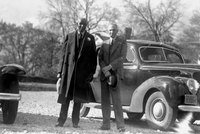
Posted:
WASHINGTON -- House members early Friday blocked the Drug Enforcement Administration from using funds to interfere in state-legal industrial hemp research, a rebuke to the agency less than a month after it seized hemp seeds intended for Kentucky's pilot program.
Two hemp-related amendments to a DEA funding bill introduced by Rep. Thomas Massie (R-Ky.) and Rep. Suzanne Bonamici (D-Ore.) prohibit the Department of Justice, including the DEA, from blocking states' importation of hemp seeds, and from preventing states from implementing laws authorizing industrial hemp activities made legal under this year's federal farm bill.
Massie’s amendment passed 246-162, and Bonamici’s was approved 237-170. The Senate will likely consider its own appropriations bill for the DEA and Justice Department, and the House amendments would have to survive a joint conference before going into effect.
"The DEA has more important things to do than interfere with legal activities at the state level," Rep. Earl Blumenauer (D-Ore.) said. "We need to remove the cloud of uncertainty,"
Massie said Kentucky was forced into a "waste of time and money and the court system's limited resources" during a legal battle with the DEA over its hemp seeds this month. “The DEA is not above Congress, it’s not above the law,” Massie added. “This amendment simply asks the DEA to follow existing laws.”
"Farmers are unable to get the seed they need in order to grow their legal crop," said Rep. Jared Polis (D-Colo.). "It's really hard to grow industrial hemp, and the DEA without any clear reason, any argument, any sense, throws itself down as a roadblock to success."
But Reps. Bob Goodlatte (R-Va.) and Frank Wolf (R-Va.) opposed the hemp seed amendment.
“If you take the DEA out of the process, you’re going to have a situation where this law will be honored in name only and not used for the purpose it is intended, which is research,” Goodlatte said. “You cannot determine the THC limits of cannabis plants simply by looking at them. They need to be examined. The DEA fulfills that role.”
Fifteen states have legalized industrial hemp production, and about two dozen others have introduced legislation that would authorize research, set up a regulatory framework or legalize the growing of industrial hemp.
As Kentucky prepared to launch its hemp-growing project, the DEA seized 250-pound shipment of industrial hemp seeds at the Louisville airport this month. Kentucky sued the DEA for seeds' release and took possession a week later after obtaining a DEA permit.
The DEA action incensed Democratic and Republican lawmakers involved in the new industrial hemp laws, and was condemned by Kentucky Agriculture Commissioner James Comer, Senate Minority Leader Mitch McConnell (R-Ky.), his Democratic challenger Alison Lundergan Grimes, Rep. Earl Blumenauer (D-Ore.) and Sen. Rand Paul (R-Ky.).
Hemp is the same plant species as marijuana -- cannabis sativa -- but it contains little to no THC, the psychoactive ingredient in marijuana associated with the "high" sensation.
Hemp, sometimes called marijuana's "sober cousin," has a long history in America and has been used in a wide range of household products, including paper, cosmetics and textiles. In the 1700s, American colonial farmers were required by law to grow the plant, and it was used for hundreds of years in the U.S. to make rope and lamp oil.
American hemp production peaked in 1943, with more than 150 million pounds from 146,200 harvested acres. Production dropped to zero in the late-1950s as a result of rising anti-drug sentiment and competition from synthetic fibers. Story from: http://www.huffingtonpost.com/politics



